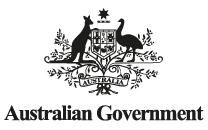Inspector-General of Biosecurity review of pest and disease interceptions and incursions
A report on Pest and disease interceptions and incursions in Australia was issued today by Australia’s Inspector-General of Biosecurity, Dr Helen Scott-Orr.
Annually, more than 18,000 vessels, 1.8 million sea cargo consignments, 41 million air cargo consignments, 152 million international mail items and 21 million passengers arrive in Australia, and numbers are growing every year. Intercepting pests and disease-carrying material along these pathways before they enter and cause incursions in Australia is a huge challenge for the Department of Agriculture and Water Resources.
Dr Scott-Orr found that the department must strengthen arrangements for intercepting pests, diseases and biosecurity risk material, pathway by pathway, to ensure that effort is being directed to areas of highest risk.
A case study of meat and meat products seized from incoming mail and passengers showed some concerning trends. Over six years to 2017, the department intercepted over 272 tonnes of meat products at the border, mostly at major airports. Meat can carry foot-and-mouth disease, African swine fever and other serious diseases. 22 per cent of meat interceptions were undeclared and detector dogs found 53 per cent of these. Nevertheless, the number of detector dogs almost halved between 2012 and 2017, so that less of the mail and passengers entering were screened over time.
Over three million sea containers arrive each year, but only about eight per cent of these actually undergo biosecurity inspections. The rest are deemed not to be of biosecurity risk based on broker declarations or departmental risk assessments. The accuracy of these declarations and assessments is checked by a cargo compliance verification program, where a very small random sample of containers is fully unpacked to ensure that the contents match the documents. This program can detect trends in inaccurate or unscrupulous documentation and lead to stronger risk management. However, in 2017 and 2018, two-thirds of targeted inspections were not carried out due to resource constraints, while 13 per cent of those consignments actually inspected showed some level of non–compliance.
The department should prioritise and properly resource these screening and verification programs irrespective of other crises. Failure to implement them increases the risk of incursions. Automated methods of profiling, screening and other interventions should also be further developed and implemented.
Where the department finds risks or occurrences of increased approach or leakage of exotic pests, it should rapidly communicate these to other stakeholders, such as industry, overseas governments and state and territory governments, to enable them to undertake pre-border prevention and post-border surveillance activities that complement those of the department.
The department also needs to continually transform the information systems that underpin its biosecurity activities. This will strengthen active management and communication of biosecurity risk, enabling effective stakeholder participation in biosecurity risk management.





